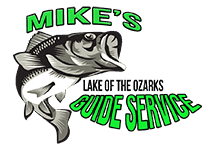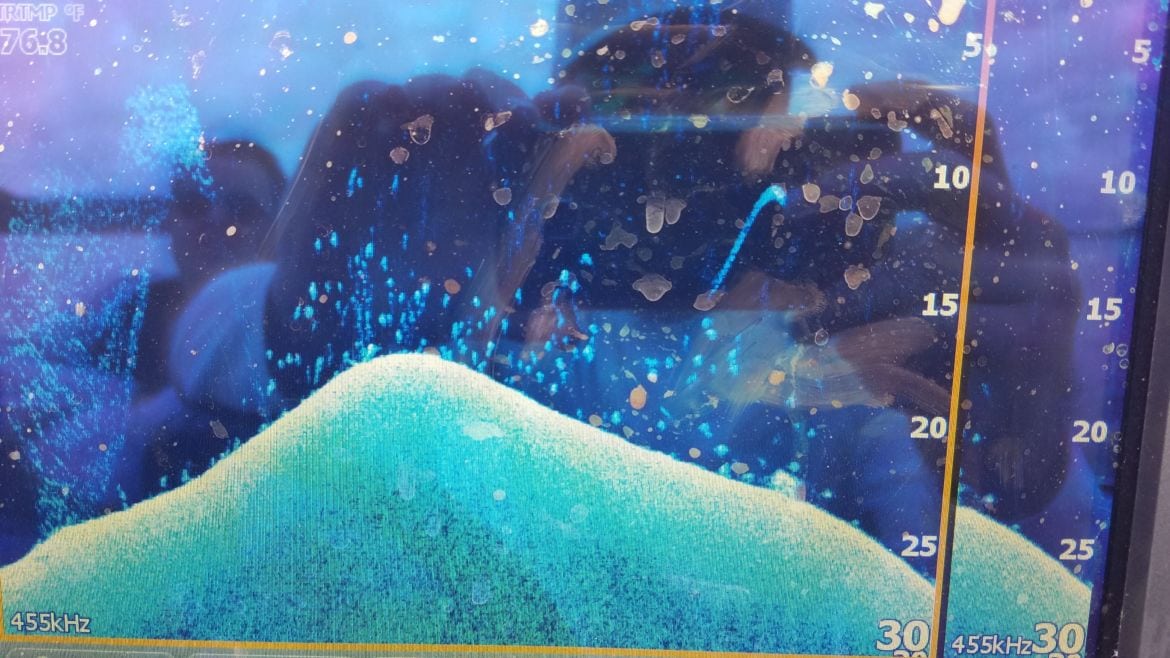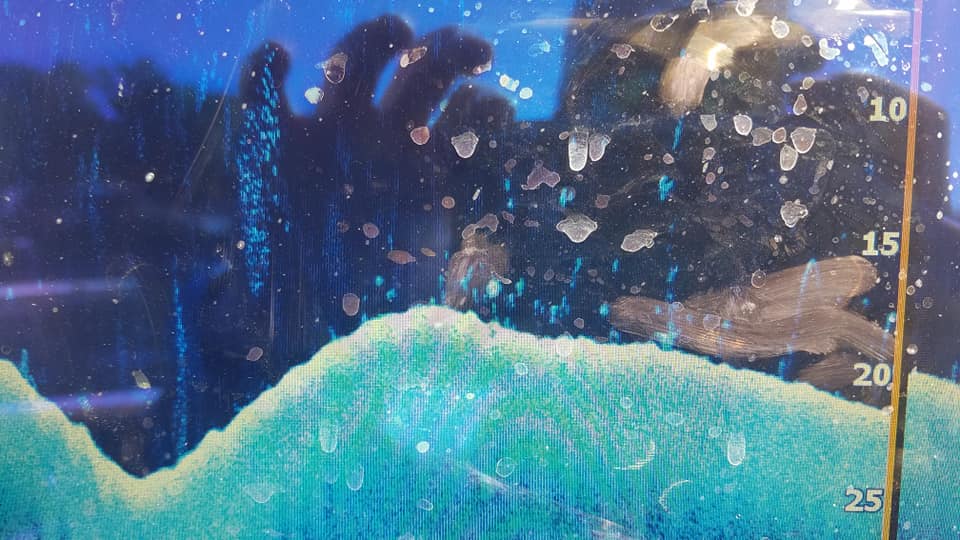We are going to keep this super simple. You don’t need 4 graphs and the best of the best electronics to find fish. I have HDS gen 2 Lowrance which work freaking amazing even in 2019. The picture quality is still just about as good as anything that’s out there and I even think it’s better than some new stuff that’s out there. This article applies to every and any year but having current running through the dam really helps school them up in May, June and throughout the summer.
Mapping
First step is looking at the map. All the maps are decent it really depends on the lake you’re at but I am using Navionics. Keep it super simple and shade in your depth you think the fish will be using. We are trying to find bass in June and July so we are going to shade in the depth of 20 feet. That’s a good starting point. As the fish change, weather, baitfish, fishing pressure, water clarity, then just make the adjustment and shade in a different depth. Right now I have it on 30ft because they went deeper. Now we start looking all over the lake for points in that depth. We are looking at long obvious points, steeper points, bluff end points. We are also looking in creeks and other places that aren’t so obvious but that same depth. Click HERE to go to Navionics web app at your house, highlight the depth in the options and mark out a bunch of potential spots you think will hold fish. Now we go scan the spots the fun part!
Graphing and marking
Now that we have a bunch of spots to try we get on the water and scan them! You want to setup your graph so you can see your map and downscan at the same time. Who cares about 2D you don’t need that, sidescan eh you don’t really need that either. Not for what we are doing. Sidescan is great for finding brush mostly. You can still see fish on sidescan but not as clear. I will use it to see fish in brushpiles. So for simplicity we just keep it on downscan and mapping. Idle over your spots and look for white blobs and specs. I use the blue color which shows them best for my eyes. With current running through the dam and bass being a predator, they will be holding close to the bottom near drops. They will be positioned horizontally along the bottom. When you see specs more vertically those are other fish. Remember how many other species of fish you have in your lake. Catfish, white bass, crappie, drum, carp, hybrids, etc. None of those position like largemouth bass. You want to see good sized white blobs, those are 4-5lb bass, the smaller blobs are 2lb bass or smaller. Obviously. You want to see bait fish on the screen as well. They will look like very tiny specs grouped together in a school. Now mark your fish. Make sure you have your units linked together with ethernet cable so you get your waypoints upfront. Now we have fish marked.
Baits
The least important part, baits! Ok now we have fish marked on the bottom so we are going to use baits that reach them. Keep it simple and use baits that will stay at the depth they are in and bring the bait right through them. Crankbaits, swimbaits, jigs, spoons, worms, Carolina rigs, whatever. You have to just experiment and keep changing baits. Once they quit biting try another bait, when they quit biting that just move along and try another spot you have marked.
Summary
Use your electronics!!! Don’t fish a spot until you see fish! Use your mapping and downscan. Mark potential spots before you go to the lake. Spend some time idling around. Try to find the out of the way areas that no one will be trying. Learn to see the difference between the smaller bass and the larger ones. Try different baits. The most fun part of fishing for me is I love to find fish on the electronics its so rewarding to find them and turn around fire a cast in there and catch them!








Leave a reply